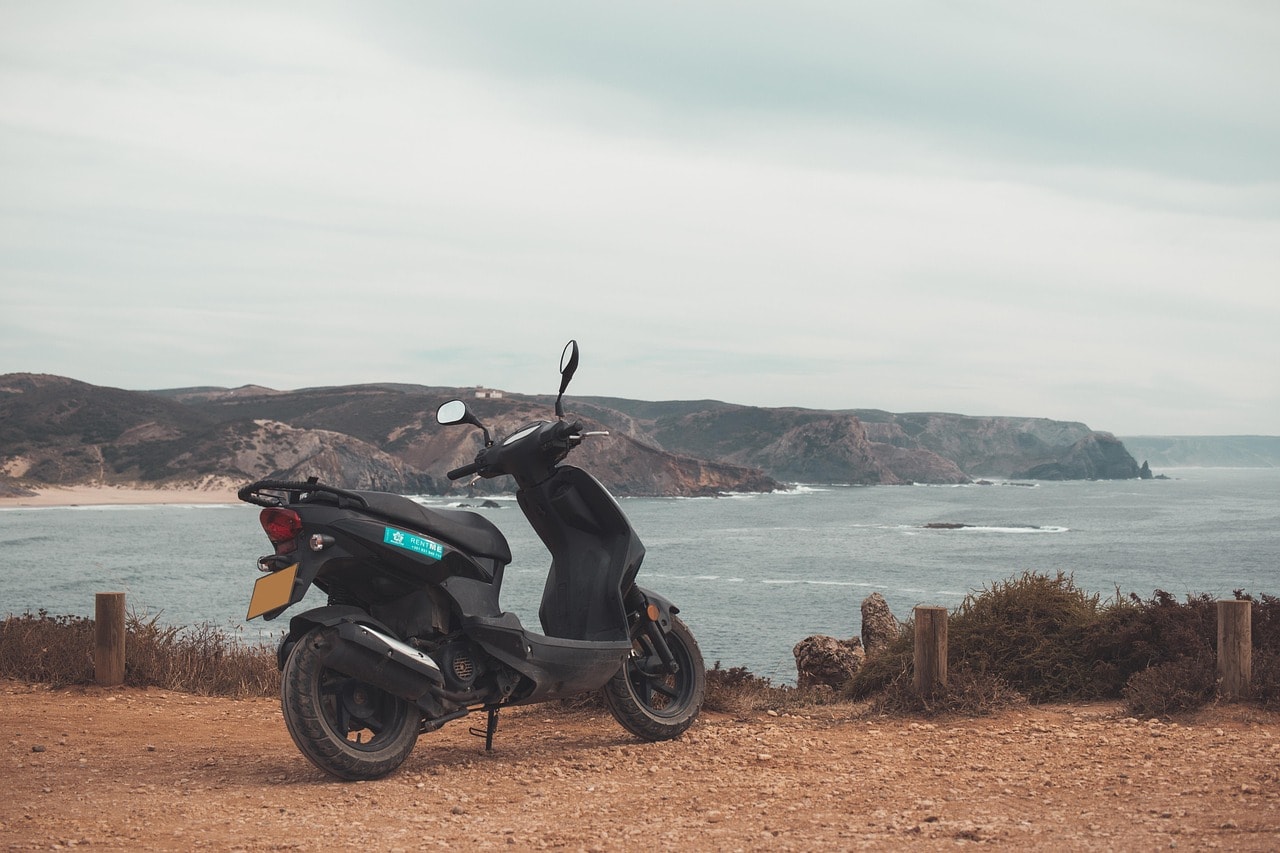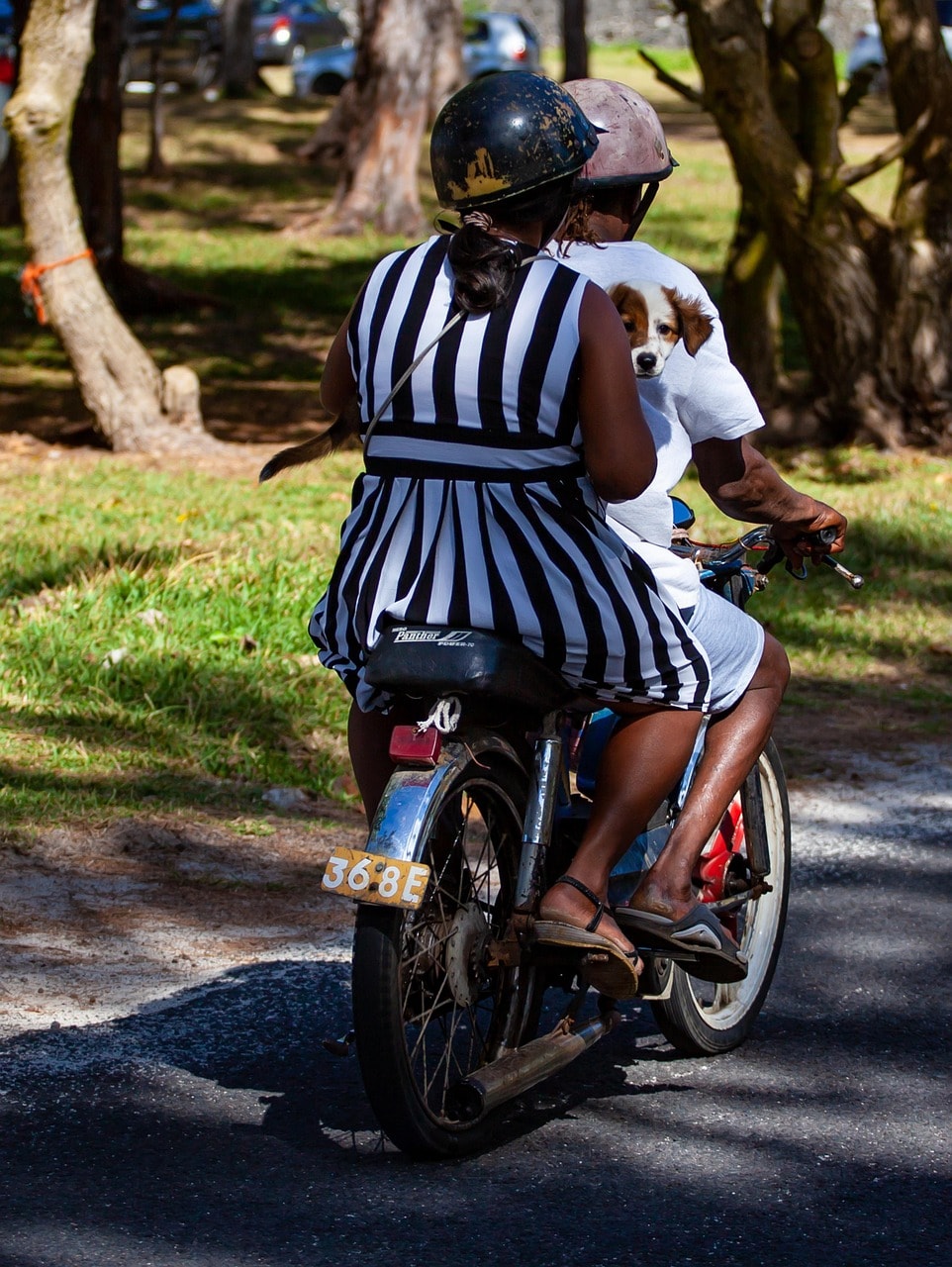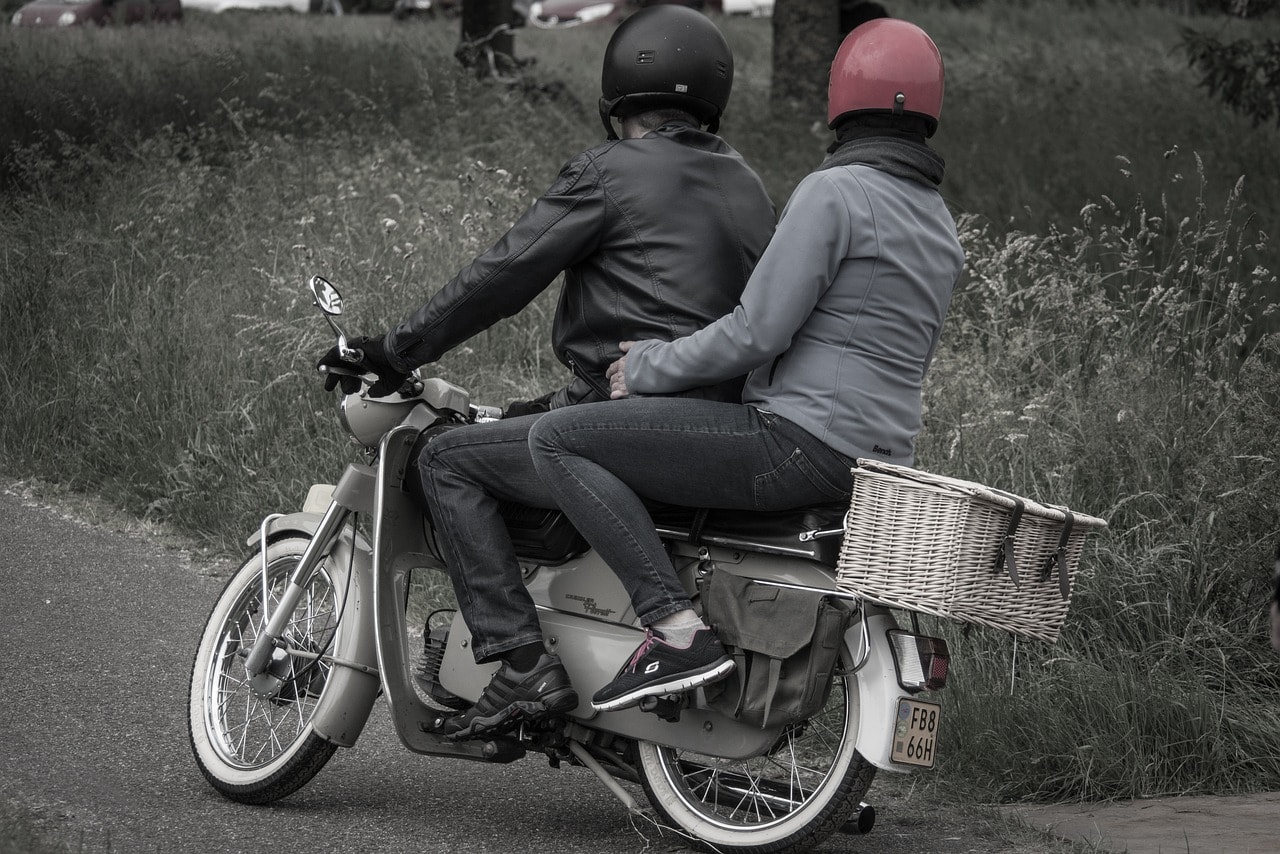If you’ve already planned your vacation in Hawaii, you should consider renting a scooter or moped for your trip. Renting a scooter will help you get to hidden natural gems, and you can travel at your own pace, taking in breathtaking views and the Hawaiian breeze. Moped scooters are a popular mode of transportation in crowded tourist areas like Waikiki, as they are easy to maneuver and drive through traffic. But one of the biggest questions we are often asked is whether the weight of the moped affects its handling, performance, and portability. In this guide, we will thoroughly discuss whether mopeds are heavy or not and how much a typical scooter weighs.
Understanding Moped Weight

Mopeds are special types of motorcycles and are considered very useful in urban areas. They’re practically small compared to other motorcycles and are more fuel-efficient. Moped scooters are two-wheeled or three-wheeled scooters and share common features with a bike or scooter. They are equipped with engines ranging from 49cc to 250cc.
While mopeds are a type of scooter, it’s also important to consider the weight of an electric scooter, which can vary significantly based on its design and components.
You should know that understanding the weight of a scooter is important while renting mopeds or scooters, as it can affect performance and overall safety.
Here are some reasons why you should be aware of your moped’s weight:
Safety Concerns: if you’re handling a moped that’s too heavy for you, it can be dangerous. If you find it difficult to control mopeds at low speeds increases the likelihood of accidents.
Impact on Performance: The weight of a moped directly influences its overall performance including acceleration, top speed, and fuel efficiency. If you choose heavier models, it can tend to be slower and consume more fuel compared to lighter alternatives.
Ease of Transport: If you plan to transport your moped using a truck or van, knowing its weight is essential to ensure your vehicle can handle the full load.
Registration: There are some states that require you to register your moped with the Department of Motor Vehicles. In such cases, the registration process requires you to provide the weight of your moped.
Why Scooter Weight Matters
If you’re a new rider, you will be more apt to choose a lighter moped so that it will be easier for you to handle. Consider this when choosing scooter rentals. Waikiki is a relatively busy city with a lot of traffic during peak hours, so a lighter moped may be more maneuverable. Commuter scooters are designed to be lightweight and easy to handle, making them ideal for navigating busy city streets and daily commutes. If you’re planning to ride near a hilly area, it will be easier for you to propel upward on hill roads with a lighter moped model. A lighter moped will also accelerate quicker and can achieve maximum speed more economically.
If you plan to spend some days renting a moped, you need to make sure it is more fuel-efficient and eco-friendly. If you own a gasoline scooter, lighter scooters are likely to consume less fuel since less power is required to move their weight.
If you’re looking for loading capacity, heavier mopeds are more likely to have a higher load and weight capacity. They can hold more passengers and cargo weight without losing overall performance while ensuring safety.
If you’re riding through unpredictable weather, scooters that are heavier could feel more stable on rides. However, their extra weight can make stopping distances longer, which could be risky with extra passengers.
When choosing a moped, it is important to consider your weight and strength. You should also consider the type of riding you will be doing and the terrain you will be riding on. Choose a moped that is the right weight for you and your needs.
What is the Average Weight of a Scooter?

The average weight of a moped varies depending on the engine size, frame material, features, and accessories. Usually, most mopeds weigh between 150 pounds (68 kg) and 250 pounds (113 kg). In comparison, the average electric scooter typically weighs between 20 to 40 pounds, making it much lighter than most mopeds. For a moped, 150 lbs is considered light to medium weight, making it easy to handle and portable for most first-time and experienced riders. While 250 lbs is considered much heavier for a moped, it would be recommended for experienced riders, as it can be challenging for those with less strength and experience.
Types of Mopeds and Their Weights

The weight of a scooter or moped depends on its type and intended use. Mobility scooters, which are designed for individuals with mobility issues, also vary in weight and can be an important consideration for users. Here’s a small comparison of popular gas-powered and electric mopeds:
Lightweight Electric Scooters
NIU NQi Sport: 148 pounds
Super73 S2: 164 pounds
Vespa Elettrica: 176 pounds
Lightweight electric scooters, which typically weigh less than 30 pounds, offer greater portability and ease of use compared to these heavier models.
Gas-Powered Mopeds
Honda Ruckus: 162 pounds
Yamaha Vino 125: 169 pounds
Kymco Agility 50: 174 pounds
For those needing more power and durability, a heavy duty scooter might be a better option, though it will typically weigh more than standard models.
Here, gas-powered mopeds tend to weigh slightly more than electric ones due to their engines, fuel tanks, and associated components. To understand further let’s break down what affects a moped’s weight.
Electric Scooters and Mopeds: Key Differences

Electric scooters and mopeds are both popular modes of transportation, but they serve different purposes and have distinct characteristics. Understanding these differences can help you choose the right vehicle for your needs.
Factors Affecting the Weight and Weight Capacity of a Moped
The weight of a moped is an important factor to consider when choosing one. If mopeds are too heavy, they will be hard to manage, but if they’re too light, their performance may be low and may not be stable enough. So, making sure you understand every part of a moped will help you find a balance in between.
It’s also crucial to consider the maximum weight capacity of the moped to ensure it can safely support the rider and any additional cargo.
Type of Engine
The type and size of the engine is the most important factor that affects the weight of a moped. Larger engines are heavier than smaller ones. The larger engines have more components such as pistons, cylinders, and valves. A larger engine will result in a heavier scooter, which can affect its handling and fuel efficiency.
- Gas-powered mopeds have internal combustion engines and fuel systems, which add to their weight.
- Electric mopeds use batteries, which can vary in weight depending on the overall moped capacity, making them lighter. If a moped uses standard lead-acid batteries, it may be heavier. However, newer lithium-ion battery packs are much lighter but tend to cost more.
Construction Materials
If the mopeds are built from steel frames, it can add weight and it will be more durable. If the mopeds are made with lightweight materials like aluminum, magnesium alloy, or composite plastics, instead, it can help reduce overall weight. Using materials like aluminum or composite plastics can result in lightweight scooters that are easier to handle and transport. Carbon fiber bodies are also becoming popular for minimizing weight while maintaining stability.
Accessories
Heavy models are usually preferred for off-road driving. If the mopeds add additional features like storage compartments, larger tires, or dual suspensions can naturally increase the overall weight. For example, a moped with a windshield, luggage rack, and saddlebags will be heavier than one built without these features.
Folding scooters, which can be easily collapsed for transport, are a popular choice for those needing a portable and lightweight option.
Moped Weight and Safety: Importance of Weight in Safety
The weight of a moped is a crucial factor that directly impacts its safety and handling. Whether you’re a seasoned rider or a beginner, understanding how weight influences safety can help you make a more informed choice.
Are Mopeds Adventure Bikes?
Mopeds are not considered adventure bikes. Adventure bikes are motorcycles that are designed for both on-road and off-road riding. They typically have larger engines, longer suspensions, and more rugged construction than mopeds. If you look at mopeds, they are relatively smaller and lighter vehicles that are designed specifically for city commuting and riding.
Unlike mopeds, kick scooters are designed for short distances and are typically used by children or for quick commutes.
But there are a few mopeds that are particularly designed for off-road riding. These models include features like larger engines, Knobby tires, and longer suspensions. They also have extra features like skid plates and handguards.
Pro tip: If you intend to rent a scooter within Waikiki, a moped is a great choice. It can handle riding and commuting through within Waikiki and it’s more lightweight and fuel efficient. If you want good-quality mopeds, you can connect with Scooter Rental Waikiki, and they will deliver your moped scooter within 30 minutes.
Tips for Choosing a Moped Based on Weight

Here are some factors you can consider when choosing to rent a moped.
Weight and strength: If you are a new rider, you may want to choose a lighter moped that is easier to handle. A heavier moped may be more difficult for you to drive and control, especially at low speeds. If you need a moped that is easy to carry and store, consider a portable scooter that can be easily transported.
The type of riding: If you are planning on riding in a city with a lot of traffic, you may want to choose a lighter moped that is more nimble and easier to squeeze through tight spaces. For off-road adventures, look into dual-sport mopeds or adventure bikes.
The terrain: If you are planning on riding on rough terrain, such as gravel roads or dirt trails, you may want to choose a heavier moped with a more robust suspension system. If you rent a lighter moped, it can be more susceptible to damage on uneven terrain.
Evaluate Transport Needs: Ensure you can comfortably load the moped if you plan to transport it.
The features and accessories: If you need a moped with a lot of features and accessories, such as a windshield, cargo rack, or saddlebags, you will need to choose a heavier moped.
Compare the curb weights: The curb weight is the weight of the moped with a full fuel tank and all of its standard features. This will give you a good comparison of the overall weight of different mopeds.
The weight distribution: Some mopeds have a more balanced weight distribution than others. A moped with a more balanced weight distribution will be easier to handle and control.
Take the moped for a test ride: This is the best way to determine the overall moped weight. It will help you evaluate its performance and usability.
Conclusion
The weight of a moped is an underrated factor to consider when selecting the right one for your rental needs. Whether a moped feels heavy or not depends on its curb weight, which includes a full fuel tank and standard features, as well as its weight distribution.
While a heavy scooter may offer better stability and performance, it can also be more challenging to handle and transport.
A well-balanced moped is typically easier to handle and control, regardless of its overall weight. If you want to truly determine if a moped is manageable for you, take it for a test ride. This is the best way to get a feel for the weight of the moped. This hands-on experience will give you the best sense of how the moped’s weight impacts its performance and usability. I hope this article helped you to choose a model that suits your needs, now enjoy a smooth and convenient ride!
FAQs
How heavy is a motorized scooter?
Some scooters have other functions that may add weight like baskets or canopy. A mobility scooter weighs between 350 and 400 pounds depending on its type, size, and feature.

